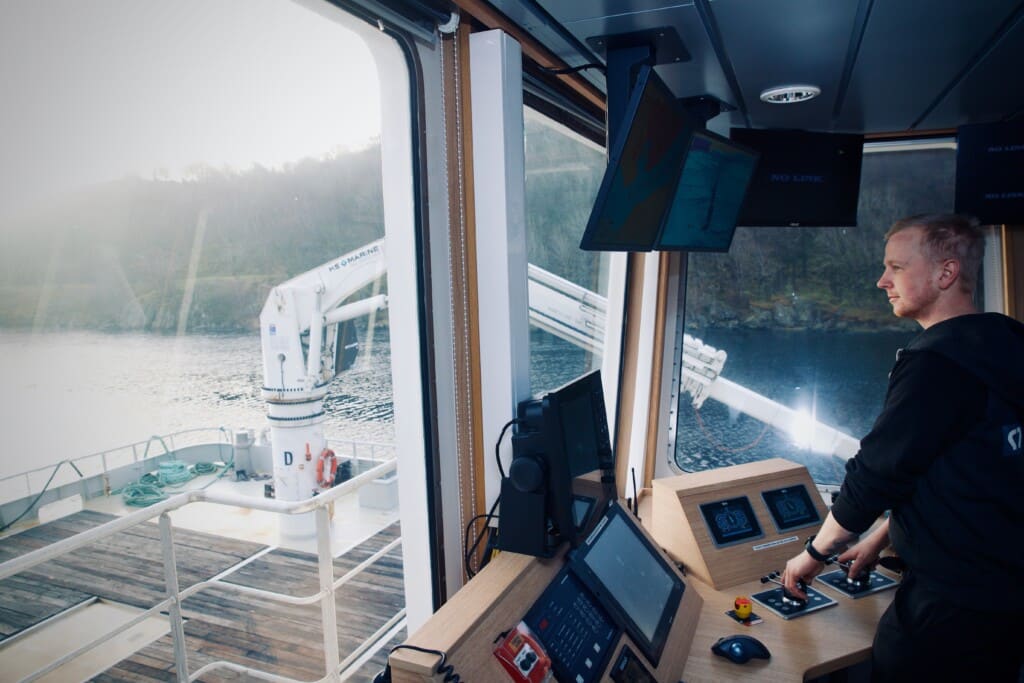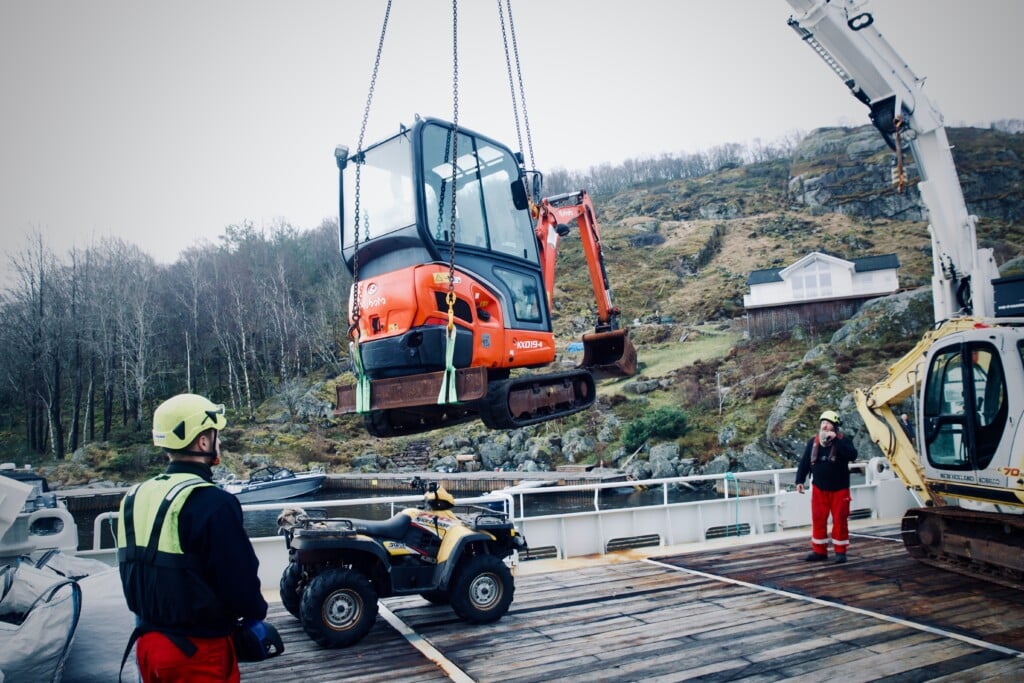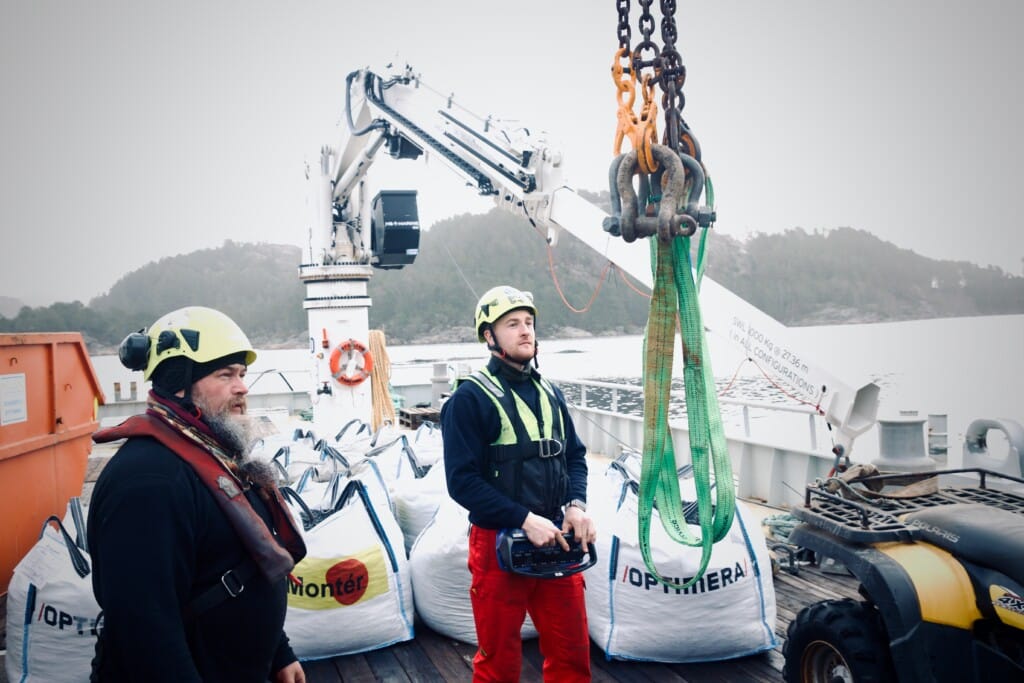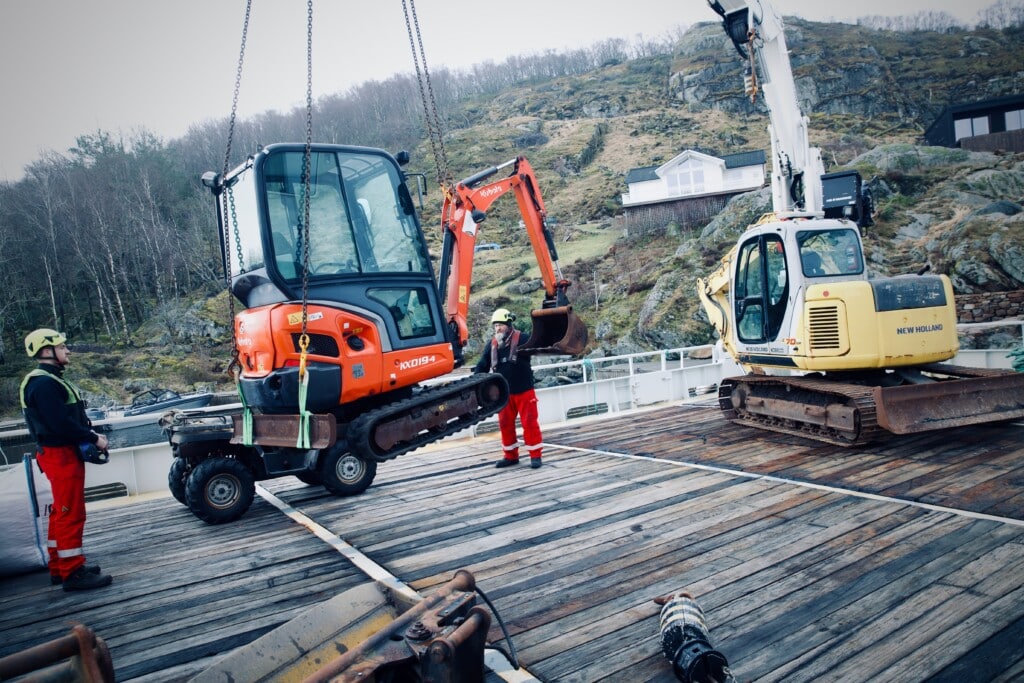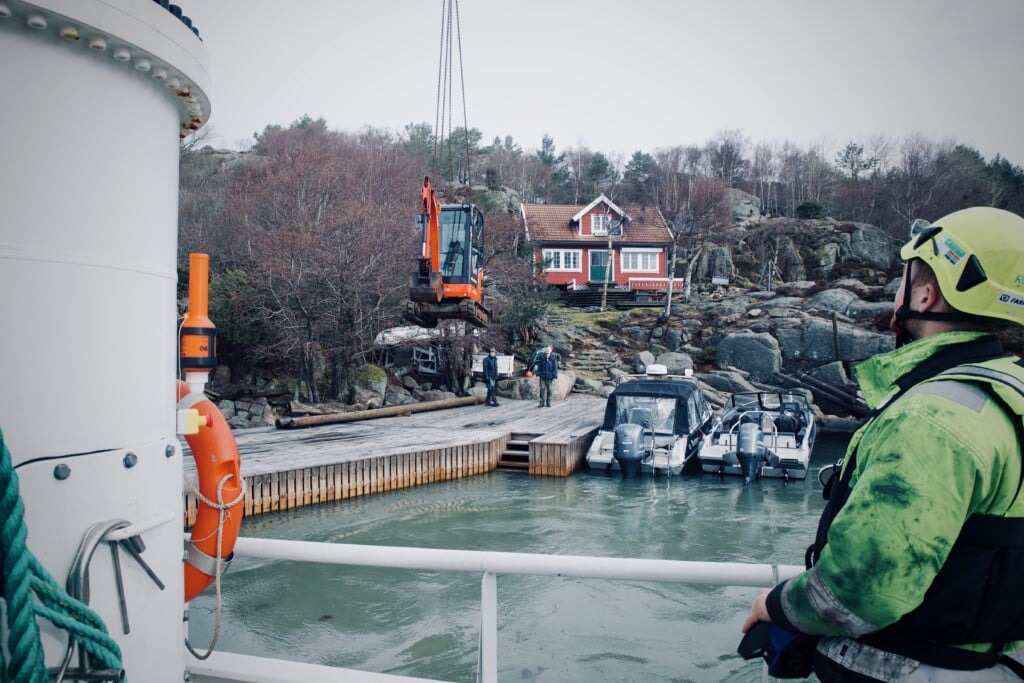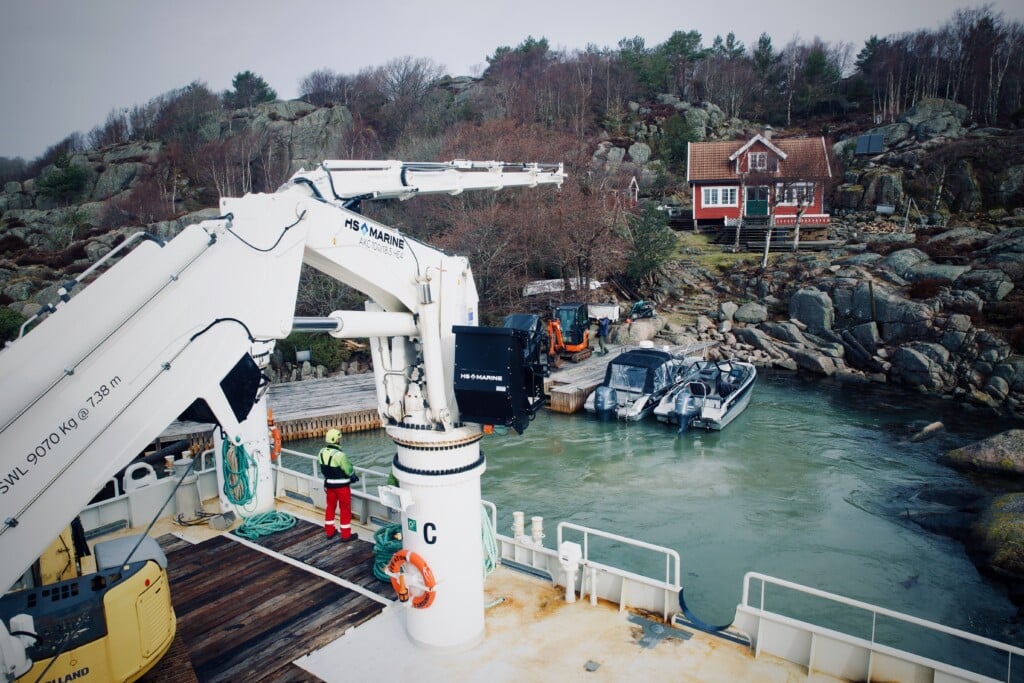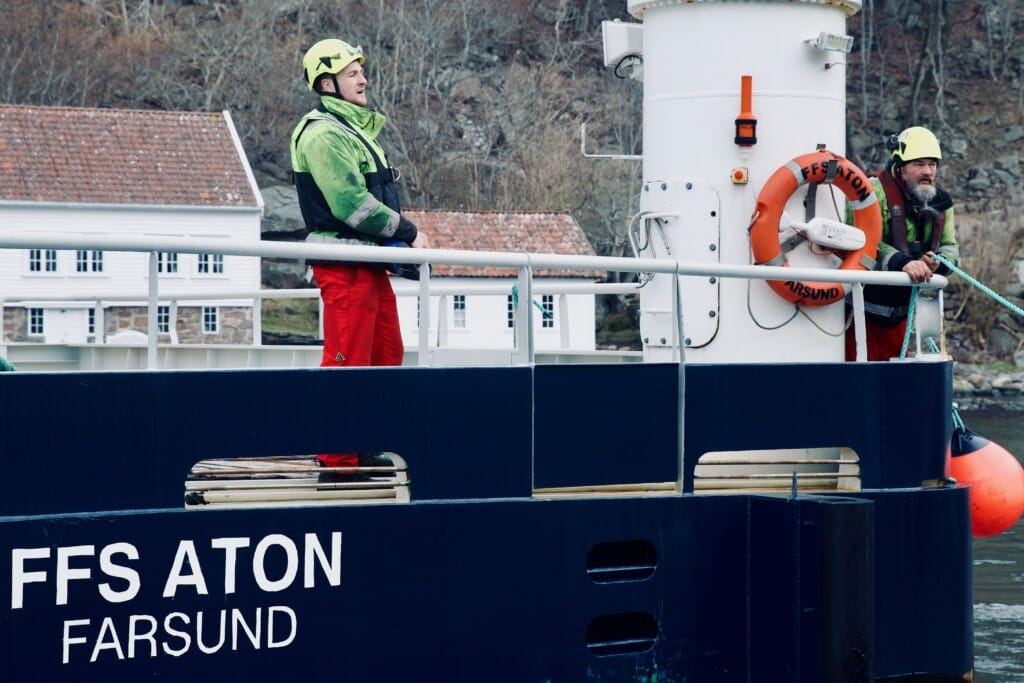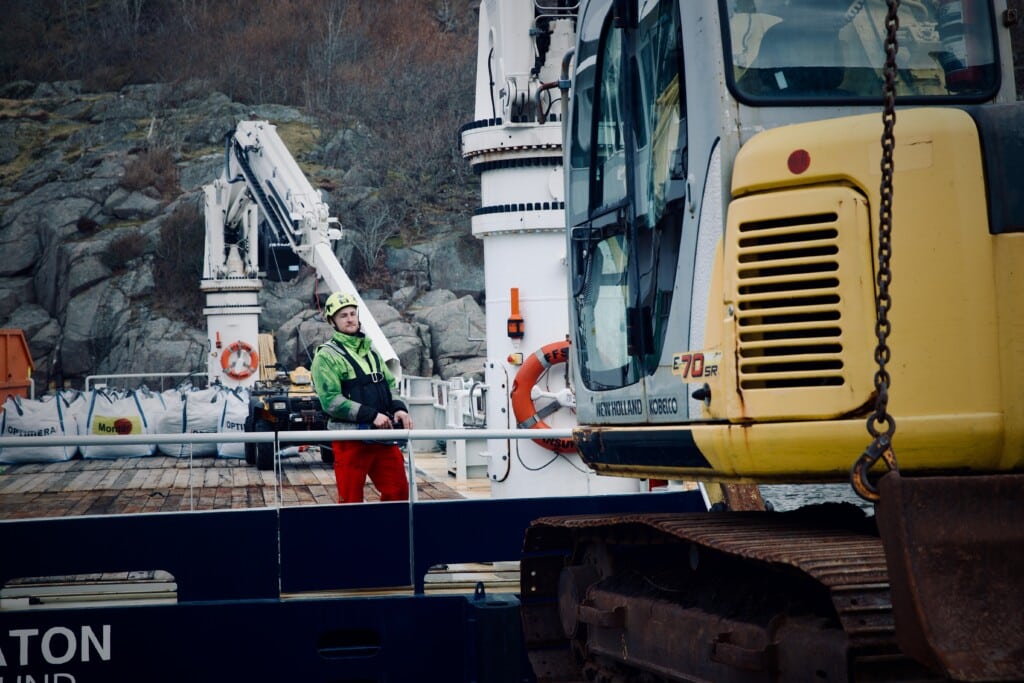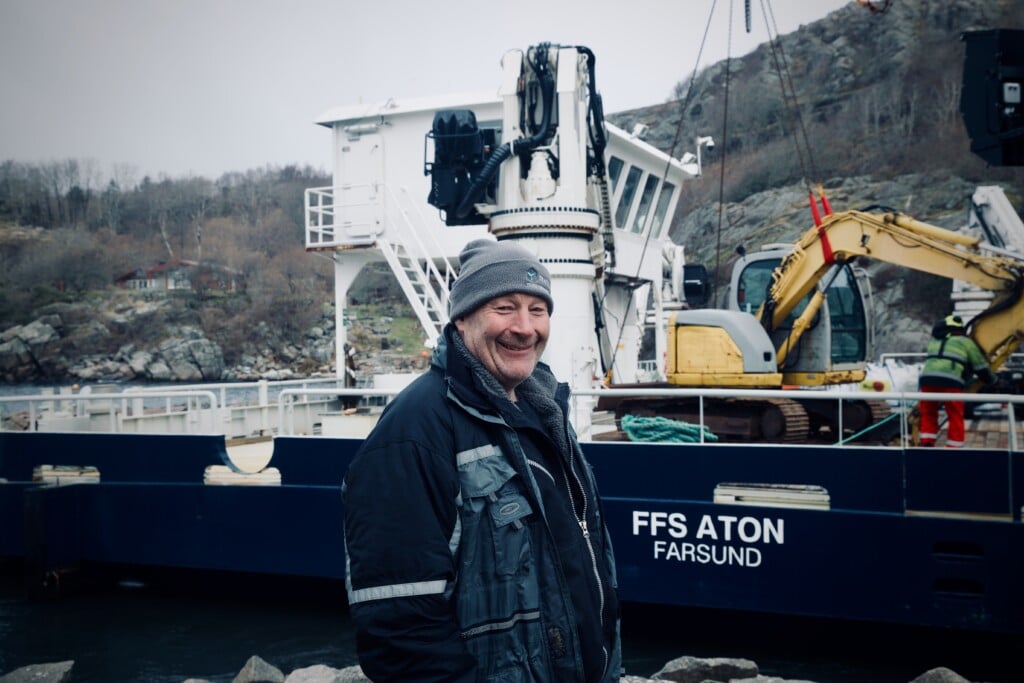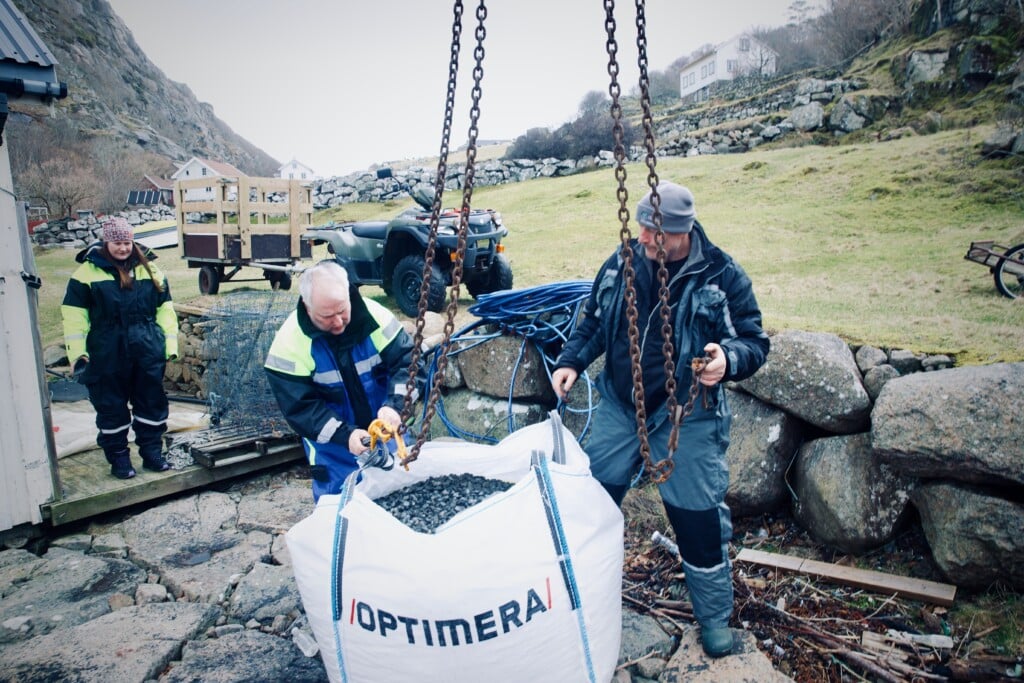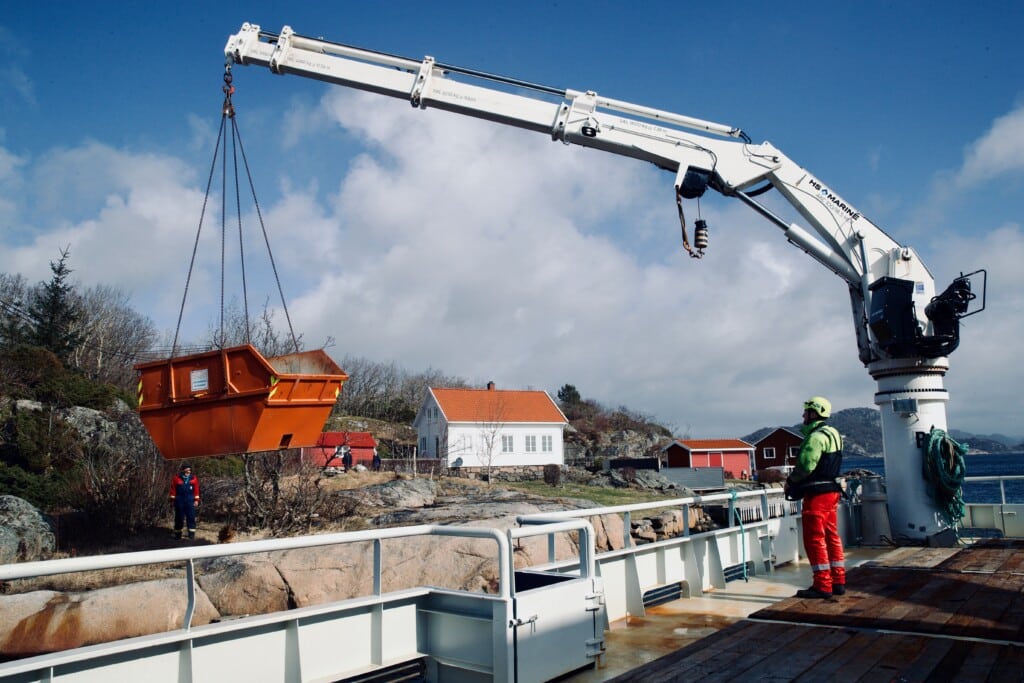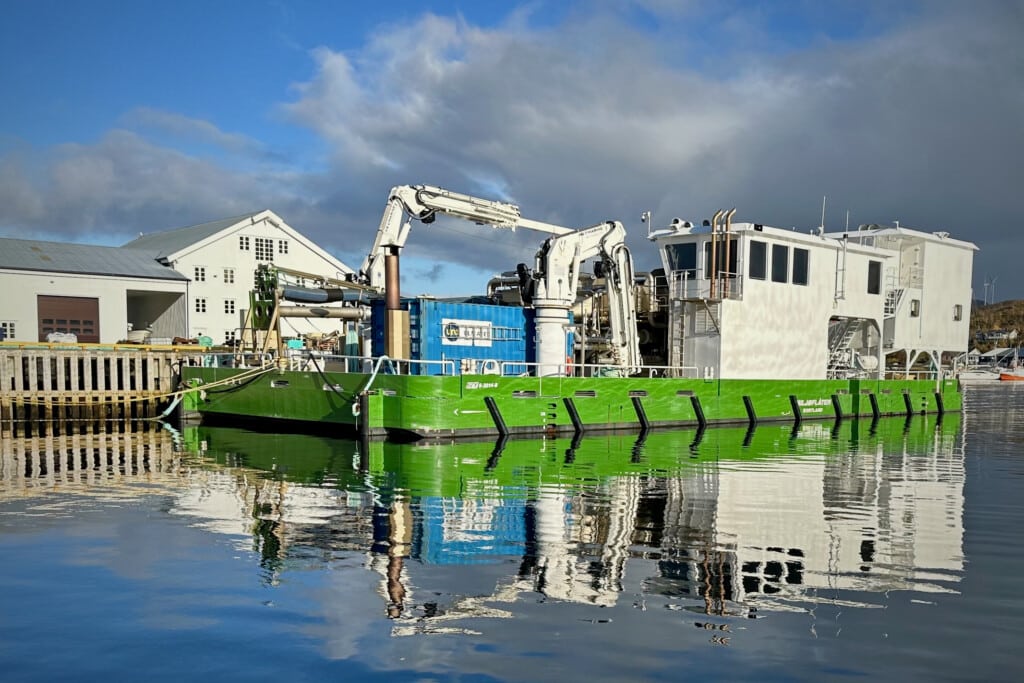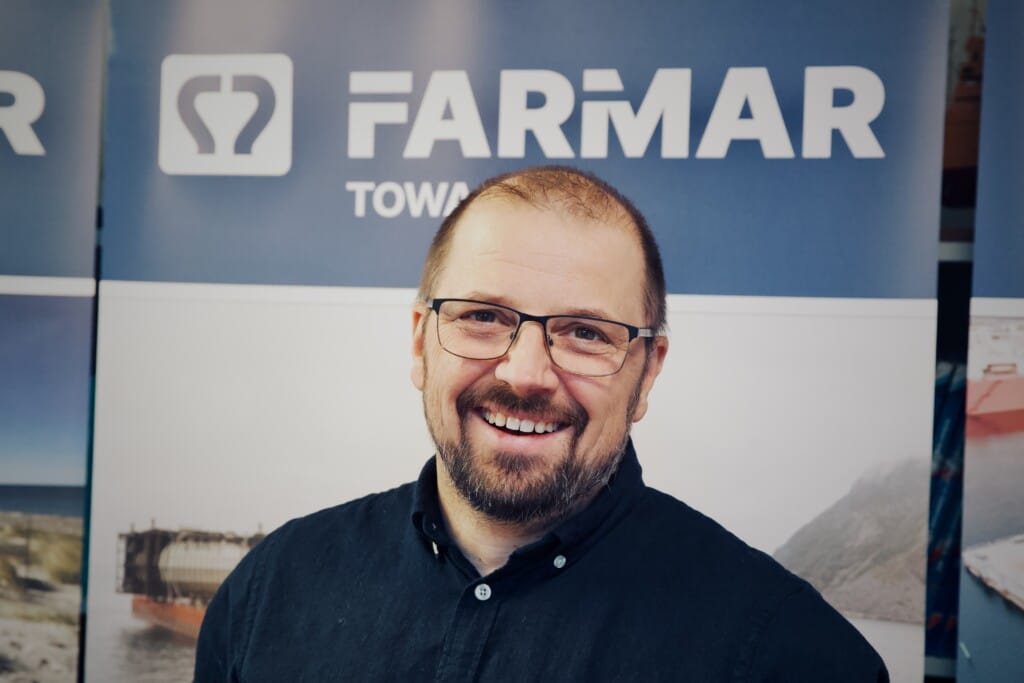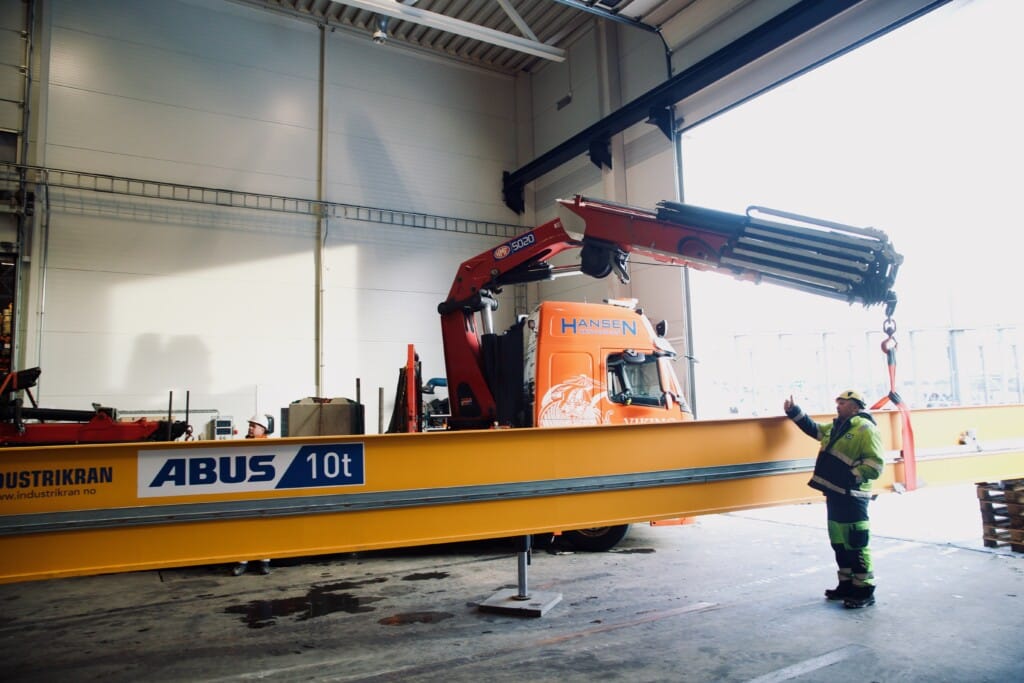FFS Aton helps cabin owners in the archipelago
25. March 2024
With four cranes, dynamic positioning equipment, and a load capacity of 200 tons, there are hardly any limits to what Farmar's new crane vessel can transport to the islands.
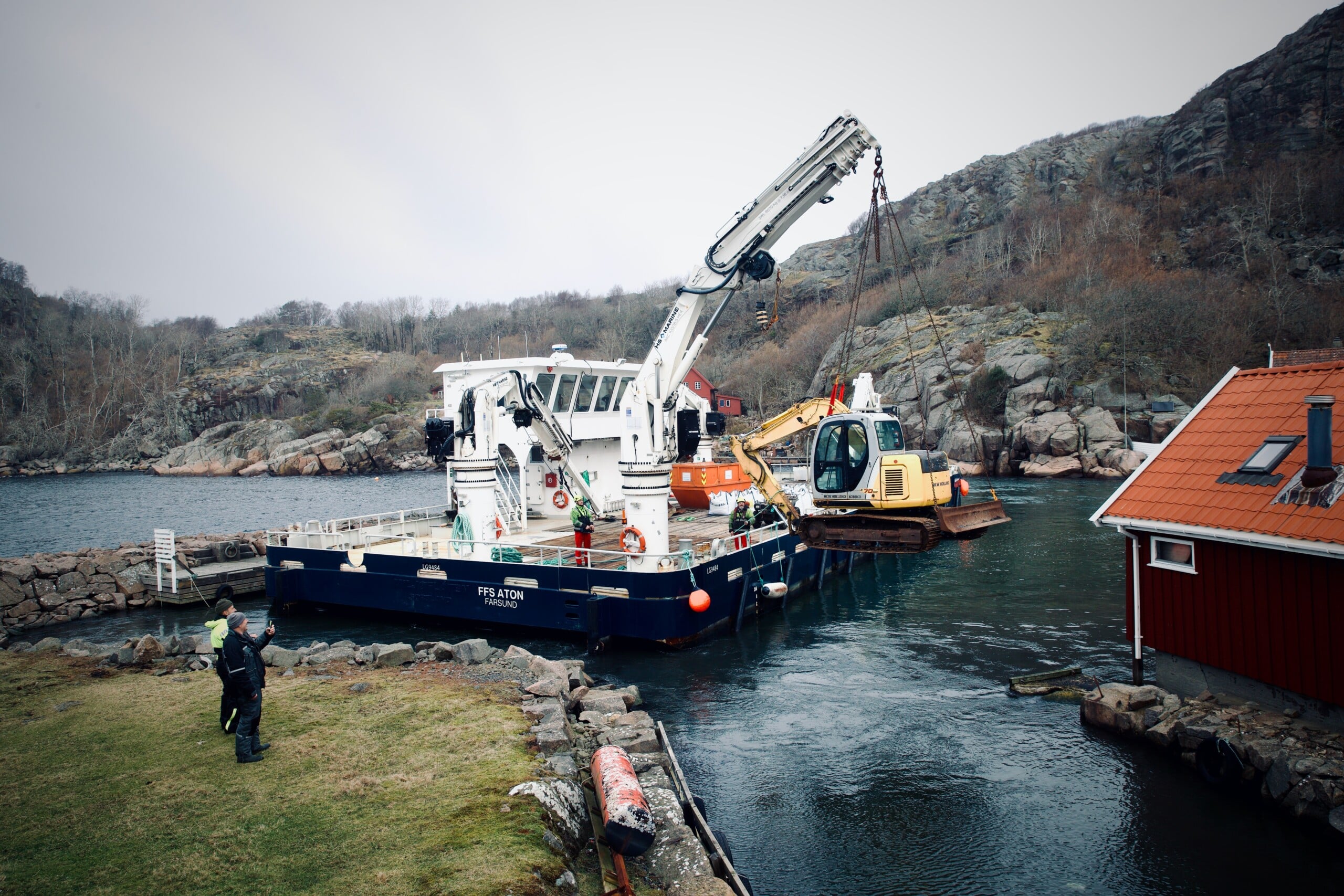
The excavator is unloaded ashore at Ullerøya. Now Frank Bulæg can start building the cabin.
Text and photo: Sveinung W. Jensen, Tellus Kommunikasjon
"Today we're helping three customers at four different destinations," says Stian Leirvik.
The clock has just passed seven. The morning sun is fighting to get through the thin layer of clouds. On the water, there's hardly a ripple to be seen.
Skipper Leirvik maneuvers the 32 meters by 14 meters large barge vessel nimbly out from Farmar's base in Lundevågen. Accompanying him as crew on this beautiful spring day are André Mosvold and Sebastian Jakobsen.
FIRST STOP s Kollavika on Langøy. Here, Egil Aunevik and Jarl Reinertsen are waiting on a dock. A mini excavator has completed its job for Aunevik. Now, it will be transported to Melkevika on Skarvøy, where Reinertsen has a construction project ongoing at the cabin.
It is narrow and shallow. Yet, it takes a lot for FFS Aton to admit defeat. Since it is built as a barge, the boat can manage shallows down to one meter. It is completely flat underneath, and the propellers do not stick out as on most other vessels.
"It has an integrated water jet, which means that the propellers are shielded. Hence, we don't risk them hitting rocks or ropes," says Leirvik.
THE MOST IMPORTANT feature onboard, according to the skipper, is still dynamic positioning (DP) - which ensures that the boat can maintain the same position using its own propellers. A computer onboard collects data about the impact of waves on the hull, about wind, which direction the vessel is pointing in, and current position. Then, command signals are sent to the vessel's propellers.
"This means that we can come very close to shore without anchors and without needing to dock," says Leirvik.
The mini excavator is easily hoisted onboard with one of the four cranes on FFS Aton, while the boat operates on DP several meters from shore.
Then, the journey continues to Skarvøy, where the excavator is unloaded again.
"NOW IT'S Ullerøy next," says Leirvik, and accelerates. Without giving the crew onboard any sudden shock. For the FFS Aton's maximum speed of six knots scares no one. But then again, this is not a speedboat.
"FFS Aton is very versatile. It is ideal for laying cables in narrow fjords, but can be used for much more. In the coming weeks, it will probably be used a lot for archipelago missions," says FFS chief John W. Nilsen.
On the idyllic Ullerøy, Frank Bulæg is to build a new cabin. For this, he needs both machinery and building materials. The first lift is an excavator. Then an ATV is unloaded, followed by about twenty big bags of gravel and sand.
"Without Farmar and their help, I would never have managed to transport an excavator out here. When we can also bring everything else in addition, it saves us many hours of work," says Bulæg, satisfied.
THE LAST DELIVERY is a waste container from Hansen-Renovasjon. The customer is Andor Simonsen on Langøy. He stands on shore and directs. The container lands exactly where it should.
Mission completed! The three working onboard sit in the bridge and chat. While the boat heads towards the base, they open their lunch boxes and enjoy a well-deserved sandwich lunch.
"It's a great boat to work on," says André Mosvold, stroking his beard.
"Yes, up here we actually have a bridge, galley, and saloon all in one, "Sebastian Jakobsen adds.
Presentation
FFS Aton / Crane vessel / Barge / 2016
